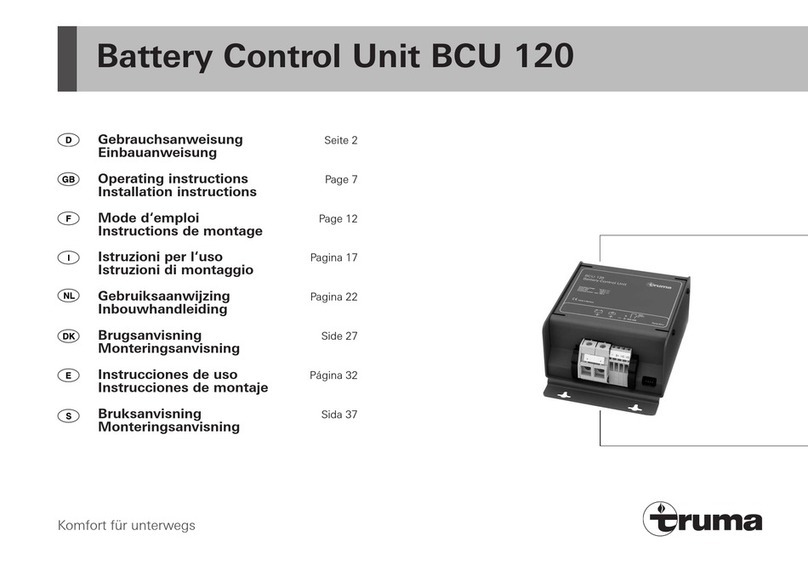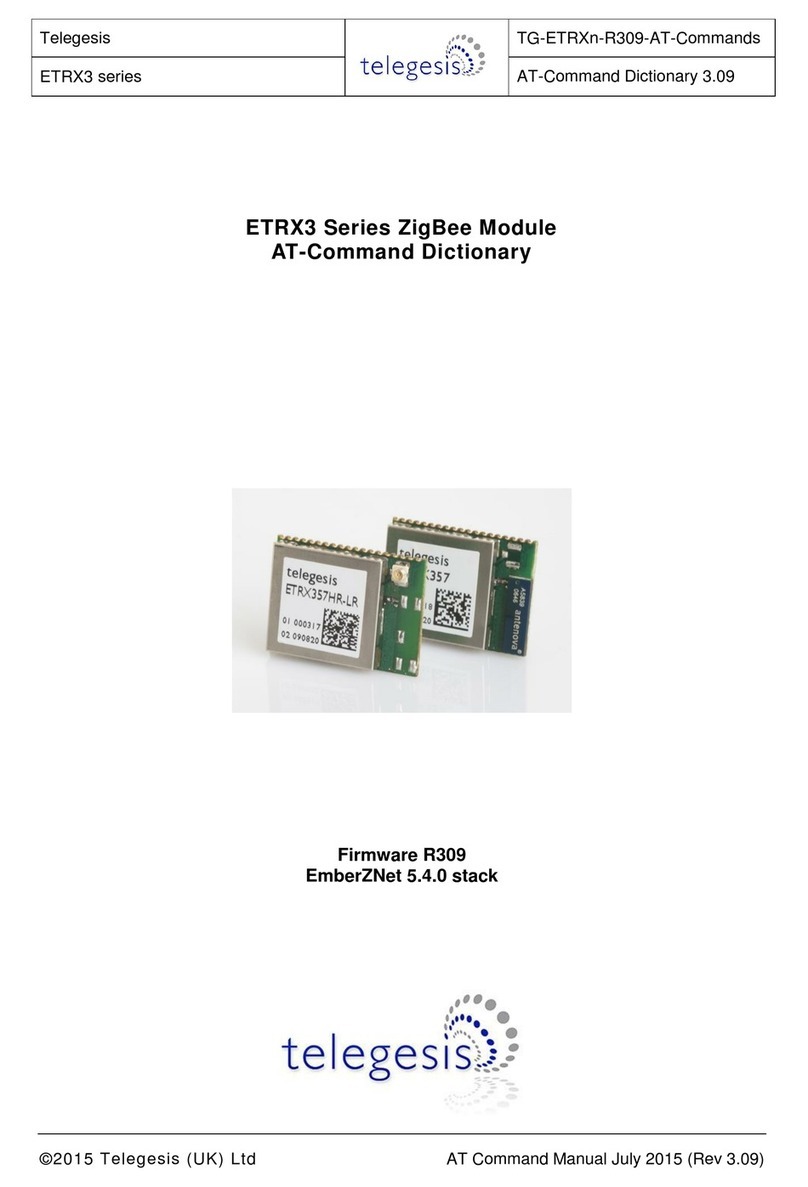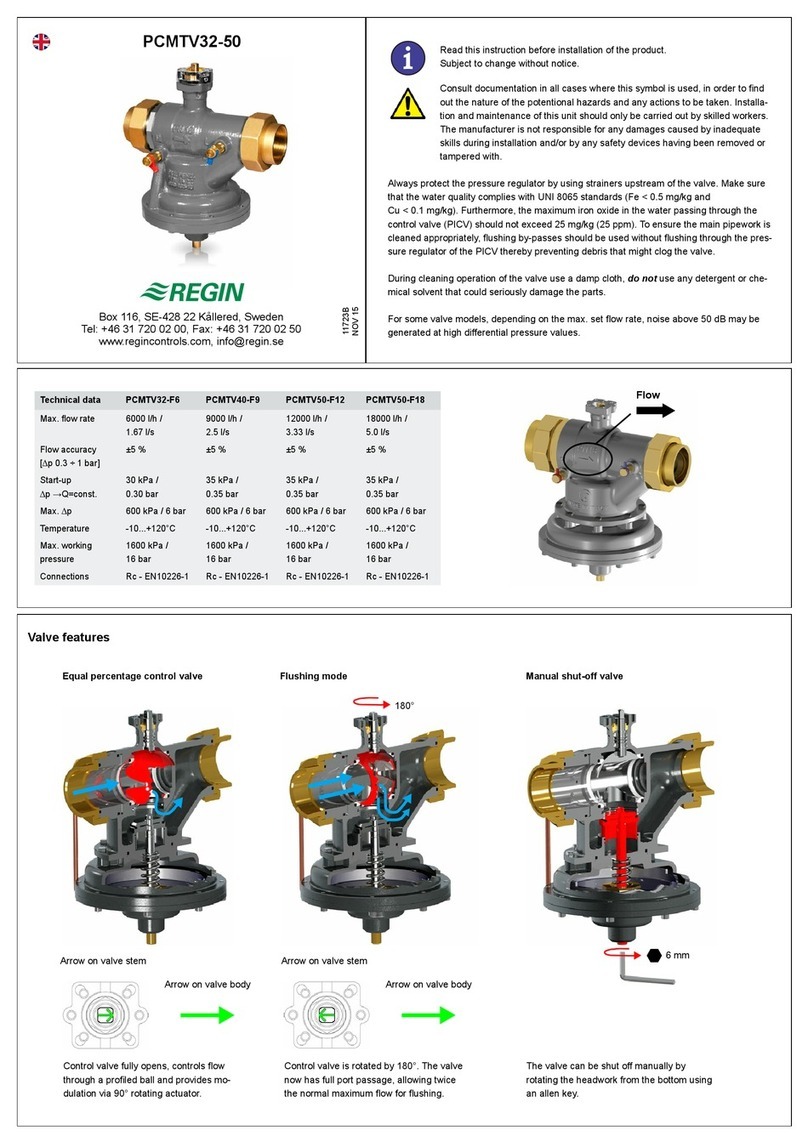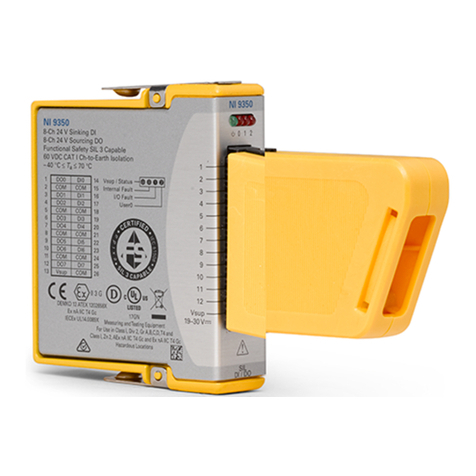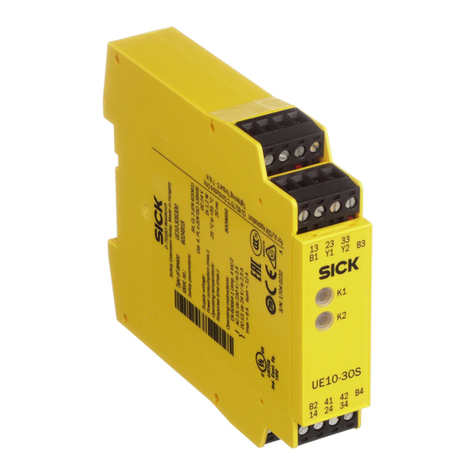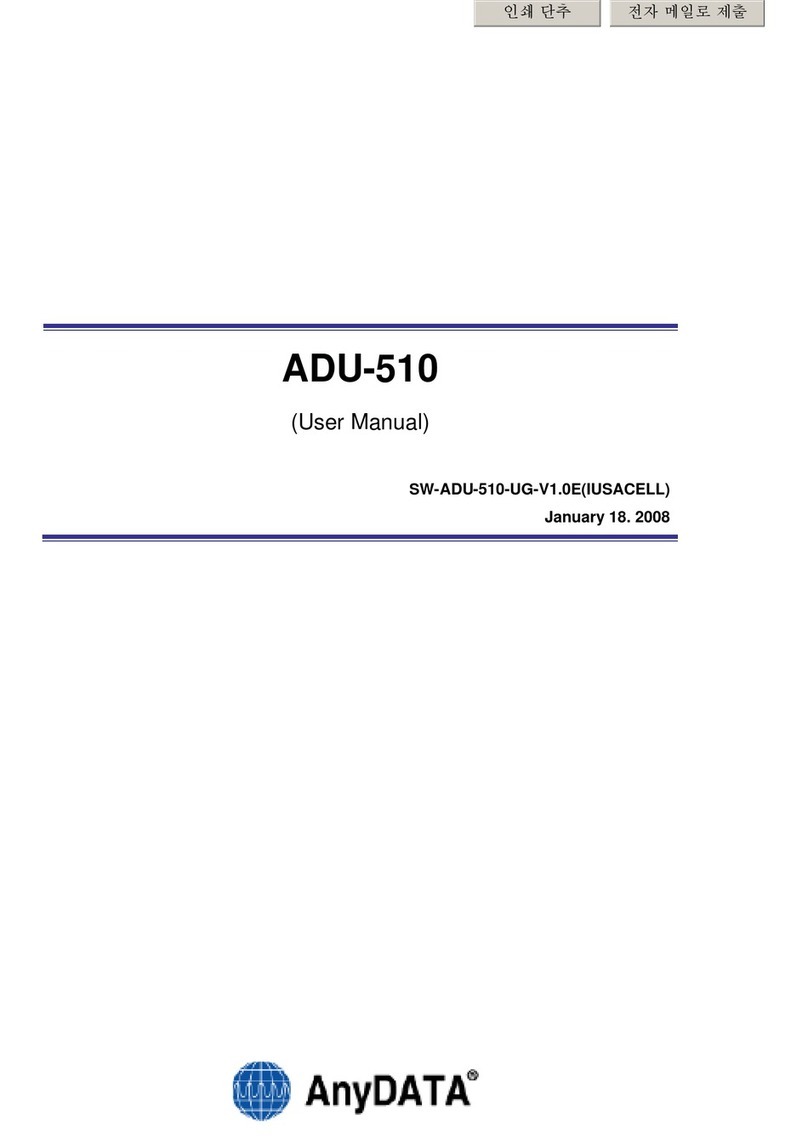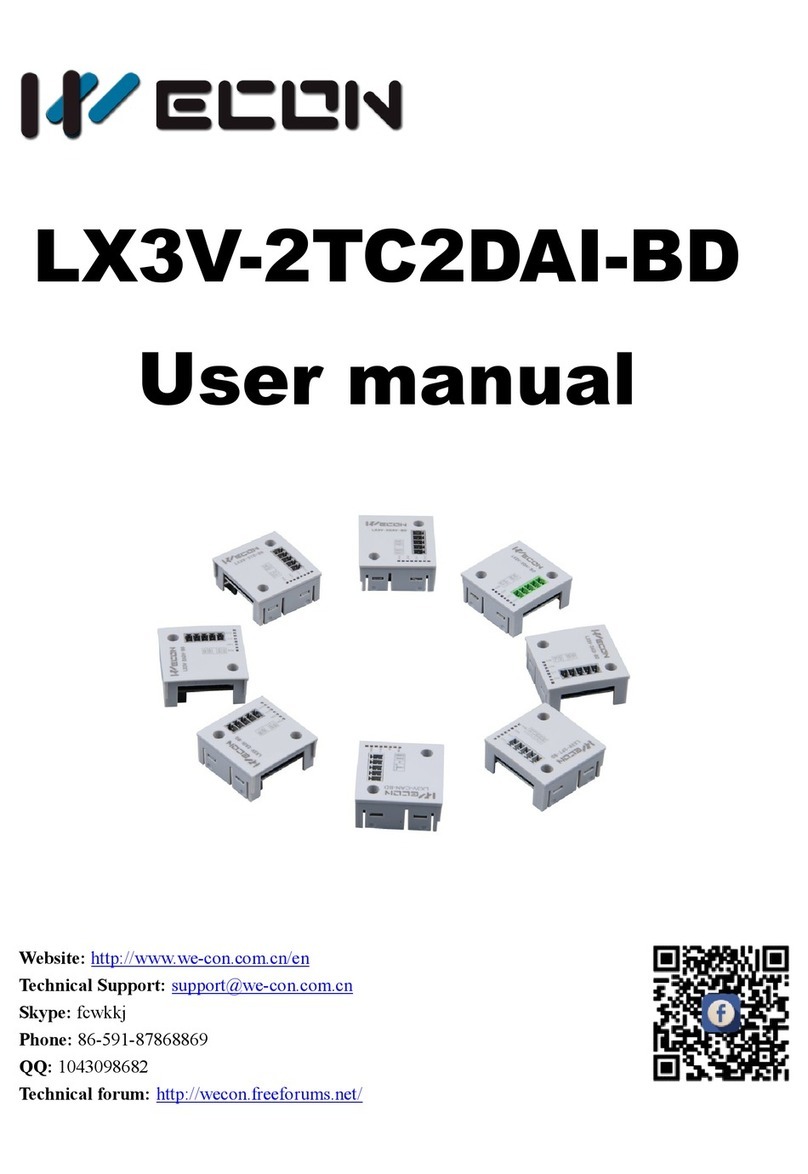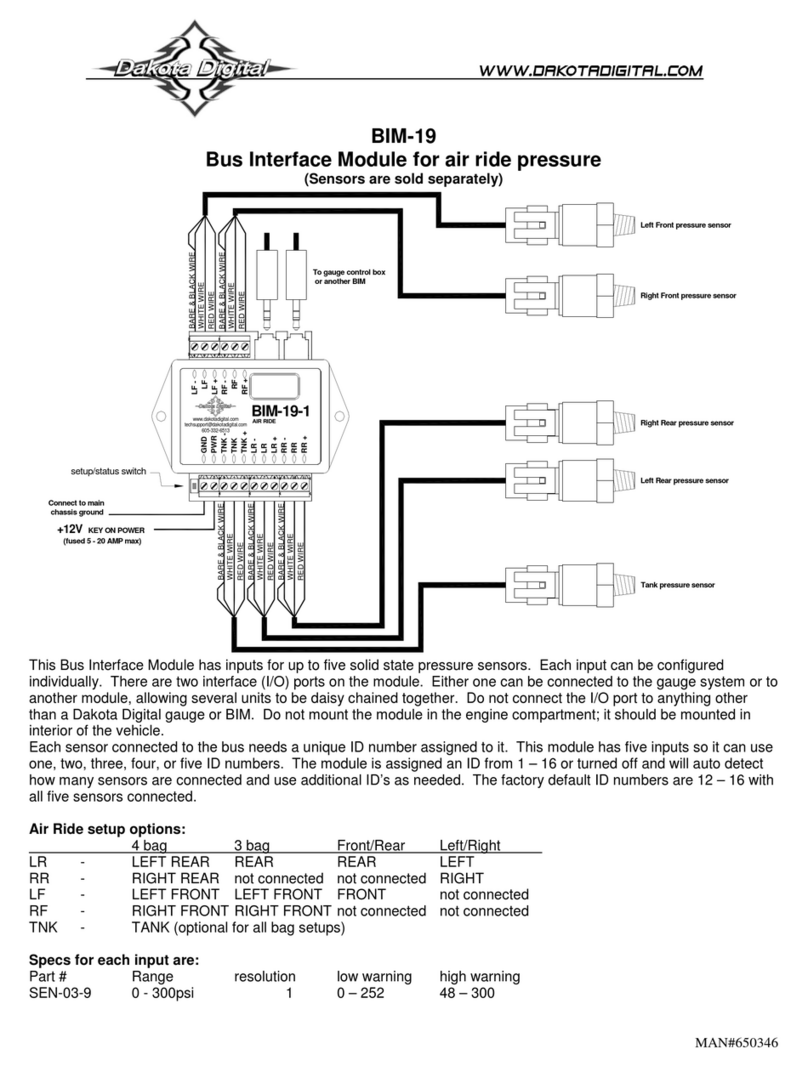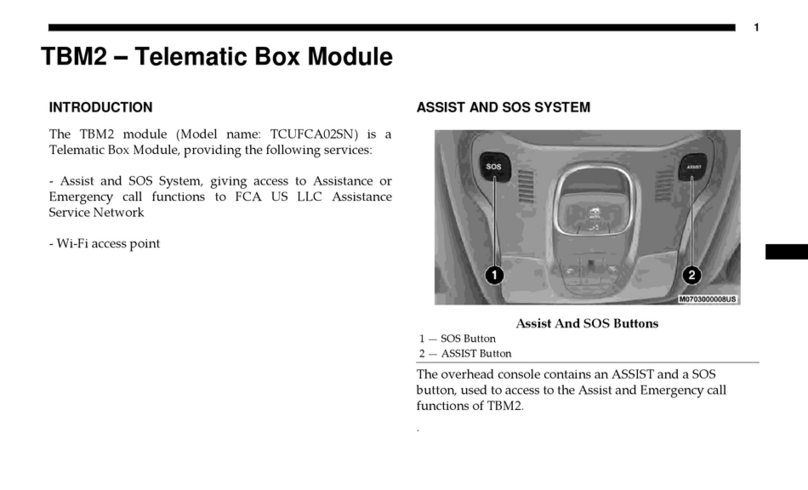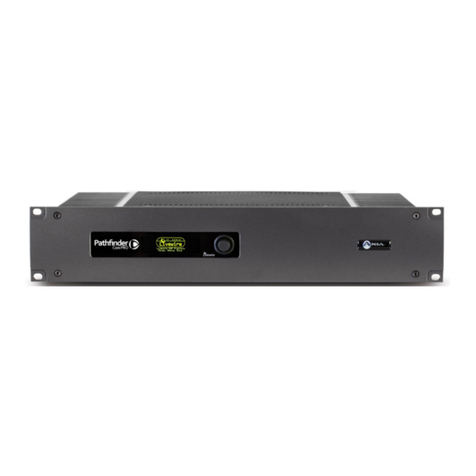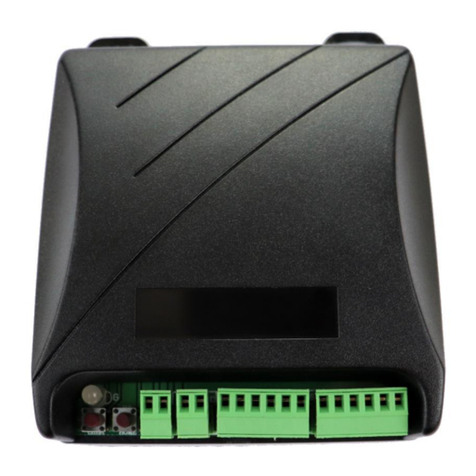DHV RISING STEM User manual

Installation, Operation and Maintenance Manual
Rising Stem Ball Valve
Document #: DHV-IOM-RSBV-19
Published: October 2019
Revision: 0
Page 1 of 28
INSTALLATION, OPERATION
AND MAINTENANCE
MANUAL
RISING STEM
BALL VALVE

Installation, Operation and Maintenance Manual
Rising Stem Ball Valve
Document #: DHV-IOM-RSBV-19
Published: October 2019
Revision: 0
Page 2 of 28
TABLE OF CONTENTS
TYPICAL CONFIGURATION ..................................................................................................................3
FOREWORD.........................................................................................................................................6
1. ENDUSER INSTRUCTION .................................................................................................................6
2. VALVE TRANSPORTATION AND STORAGE .......................................................................................7
2.1 TRANSPORTATION.........................................................................................................................7
2.2 STORAGE .......................................................................................................................................7
3. VALVE INSTALLATION ...................................................................................................................... 8
3.1 INSPECTION BEFORE INSTALLATION .............................................................................................8
3.2 INSTALLATION ...............................................................................................................................9
4. VALVE OPERATION ........................................................................................................................14
5. VALVE MAINTENANCE ..................................................................................................................18
6. DETAILED DISASSEMBLY AND ASSEMBLY......................................................................................22
6.1 VALVE DISASSEMBLY ...................................................................................................................22
6.2 VALVE ASSEMBLY ........................................................................................................................22
7. TROUBLESHOOTING......................................................................................................................25
8. WARRANTY AND SERVICE.............................................................................................................26
8.1 VALVE WARRANTY PERIOD .........................................................................................................26
8.2 SERVICE.......................................................................................................................................26
APPENDIX I –INSTALLATION REQUIREMENTS..................................................................................27

Installation, Operation and Maintenance Manual
Rising Stem Ball Valve
Document #: DHV-IOM-RSBV-19
Published: October 2019
Revision: 0
Page 3 of 28
TYPICAL CONFIGURATION
VALVE DETAILS –RISING STEM BALL VALVE –SOFT SEAT

Installation, Operation and Maintenance Manual
Rising Stem Ball Valve
Document #: DHV-IOM-RSBV-19
Published: October 2019
Revision: 0
Page 4 of 28
VALVE DETAILS –RISING STEM BALL VALVE –METAL SEAT

Installation, Operation and Maintenance Manual
Rising Stem Ball Valve
Document #: DHV-IOM-RSBV-19
Published: October 2019
Revision: 0
Page 5 of 28
VALVE DETAILS –RISING STEM BALL VALVE –METAL SEAT –PISTON ACTUATOR

Installation, Operation and Maintenance Manual
Rising Stem Ball Valve
Document #: DHV-IOM-RSBV-19
Published: October 2019
Revision: 0
Page 6 of 28
FOREWORD
Personal safety and Long Term Ownership of your DHV Rising Stem Ball Valve is the most important
matter in reviewing our Installation, Operation & Maintenance Manual. This manual will provide all
the necessary safety guidelines for our valve including information for the valve transportation,
storage, installation, operation and maintenance. Please read carefully before installing or servicing
the valve.
DHV provides general guidelines in this manual, and cannot provide specific data and warnings for all
possible applications. The purchaser/end user must therefore assume responsibility for proper valve
selection, sizing, installation, operation, and maintenance of DHV valve products. The purchaser/end
user should read and understand this document and any instructions provided with the product, and
conduct training with its employees and contractors to ensure they are aware of the proper and safe
use of DHV valve products in connection with the specific application.
1. ENDUSER INSTRUCTION
Personnel safety is always the most important factor in the transportation, storage, installation,
operation and maintenance of any valve. DHV valves are designed to meet the customer’s order
requirements and specifications. DHV disclaims all responsibility for problems that may be caused by
applications other than the specified use. Valve service pressure/temperature information is detailed
on the valve name plate. When selecting a valve, always consider the application, service and
temperature for the intended service. Select the applicable valve material for anti-corrosion and anti-
abrasive service. For safety of personnel and plant/environment: Prior to conducting any service to
the valve, ensure the valve is not under pressure, properly vented, and drained before servicing. For
all electric, hydraulic or pneumatic actuated valves, all power connections to the valve/actuator must
be turned off before performing any maintenance and service. When performing any operation,
maintenance or service, personal protective equipment should be used, such as protective clothing,
oxygen masks, safety glasses, work gloves, etc. DHV will not be responsible for any loss or expense
resulting from the failure of equipment, damage to any property, or death or injury to any person
resulting in whole or in part from repairs or modification performed by other than authorized DHV
personnel. Such unauthorized repairs shall also serve to terminate any contractual or other warranty,
if any, on the equipment and may result in equipment no longer meeting applicable requirements.

Installation, Operation and Maintenance Manual
Rising Stem Ball Valve
Document #: DHV-IOM-RSBV-19
Published: October 2019
Revision: 0
Page 7 of 28
2. VALVE TRANSPORTATION AND STORAGE
2.1 TRANSPORTATION
1. Valves should remain in the closed position during shipping and handling. Each valve should be
securely packaged either on a pallet or in a crate to avoid any damage during shipping.
2. Use the proper hoisting equipment to transport the valve, especially during lifting or lowering the
valve. Special attention to personnel safety and the care of the valve should be made when
transporting the valve. Avoid impacting or striking the valve during transportation. Lay the valve on a
clean flat surface; make sure to avoid laying the valve on the flange face. Ensure there is adequate
clearance around the valve for proper operation and maintenance.
3. During transportation, ensure the valve paint, name plate and flange sealing surfaces are fully
protected. Do not drag the valve on the floor, nor put the valve flange sealing face on the floor.
4. For those valves not required to be immediately installed, do not open the end flange protective
covers. Ensure the valves are stored in a safe clean environment and are protected from rain and dust.
2.2 STORAGE
1. Valves should be stored in the closed position. Valve ports and flange serration surfaces should be kept
sealed with protective flange covers.
2. Valves should be stored in a dust free, low humidity and well ventilated room, not in direct contact to
the floor. If possible, the valves shall be kept in the original packing box. If valves have to be stored
outdoors, keep the valve in the original crate or shipping container. Ensure the valve packaging is stored
on raised blocking to avoid moisture damage. Protective covering should be used for protection against
dust and rain.
3. Valves should never be stacked on top of each other, to avoid any valve distortion which may affect
valve performance and cause personnel injury.
4. Valves that have been stored for an extended period of time should be cleaned and inspected prior to
installation. Inspect the sealing surface to ensure it is clean and free of any debris or damage.
5. Do not expose the valve to any corrosive environment as this may cause damage to the valve
components.

Installation, Operation and Maintenance Manual
Rising Stem Ball Valve
Document #: DHV-IOM-RSBV-19
Published: October 2019
Revision: 0
Page 8 of 28
3. VALVE INSTALLATION
Review all documentation to fully understand the valve and related information that will provide safe
installation and a long service life for your valve.
Valve information can be found on the valve body, and the name plate. Fig 1 is a typical nameplate.
Reference the information on our nameplate for ordering replacement parts, or when making inquiries
about your valve’s operation or maintenance needs.
Valve ends should have a protective cover to protect the valve port from any foreign particles and dust
which will damage the ball and seat sealing surfaces.
Figure 1 Typical Valve Nameplate Information
3.1 INSPECTION BEFORE INSTALLATION
3.1.1 Before installation, check the valve nameplate and valve body information to ensure the valve is
suitable for the intended service.
3.1.2 Before installation, remove the flange cover and the protective film on the flange sealing face, inspect
the ports and the flange sealing surface, remove any dirt with a clean soft cloth, use an anti-corrosive
cleaning liquid to clean if necessary, and never use any other chemical products.
3.1.3 Inspect the flange gasket (including ring gasket) sealing surface and ensure it is in acceptable
condition for installation.
3.1.4 After cleaning the valve and before installation, open and close the valve one time. Ensure the valve
cycles smoothly. If abnormal operation is experienced, stop the operation and inspect the valve internals
for any obstructions that may be preventing normal operation.
3.1.5 After successfully cycling and assuring the proper operation of the valve, return the valve to the open
position and ensure the valve sealing surfaces are protected until installation is complete.
SIZE BODY
CLASS STEM
FIG NO. BALL
S/N NO. SEAT
DATE
API 607 NACE MR0175/ISO15156
750 psi at -50 ℉705 psi at 400 ℉
RISING STEM BALL VALVE
ASME B16.34
DHV INDUSTRIES,INC
10(DN250)
300(PN50)
BD30XF52
WCC
A182 F51
A182 F51
A182 F51+R-PTFE
LOW EMISSION

Installation, Operation and Maintenance Manual
Rising Stem Ball Valve
Document #: DHV-IOM-RSBV-19
Published: October 2019
Revision: 0
Page 9 of 28
3.2 INSTALLATION
Position the valve into the pipe or the flange connection; ensure that any stresses caused by improper pipe
alignment are relieved. Valves are not intended to be a means of aligning improperly fitted pipe.
3.2.1 MANUAL VALVES
Install the valve using qualified piping standards and practices. Valves marked with flow direction
must be installed in line with the piping flow.
The recommended orientation for rising stem ball valves is upright with the valve in a horizontal
line. The valve may be installed in other orientations; however, any deviation from recommended
horizontal position may compromise proper valve operation and void the warranty.
3.2.2 ACTUATED VALVES
All DHV pneumatic actuated valves are equipped with
lifting lugs on the valve, use these lifting lugs to lift the
valve to avoid any damage to the valve or injury to the
operator. Never use the lifting lugs on the actuator to lift
the entire valve assembly.
During installation, follow the valve body flow arrow
direction, connecting the valve upstream side to the
pipeline high pressure side.
Correct valve installation is very important, if valve is
installed backwards, the valve parts may not be able to
hold the pressure as original designed. If possible, install
the actuated valve vertically.
If actuated valve is installed in other than vertical
position, according to the arrangement of the
valve/actuator, additional support for the actuator may
be required.

Installation, Operation and Maintenance Manual
Rising Stem Ball Valve
Document #: DHV-IOM-RSBV-19
Published: October 2019
Revision: 0
Page 10 of 28
Once the pneumatic actuator position limiting screw has been set,
the end user can not adjust the screw by themselves, otherwise
equipment damage, personnel safety or financial loss may occur,
end user shall take full responsibility.
After valve and actuator have been
installed on the pipe line, connecting
the power and pressure source to the
actuator.
WARNING: Pneumatic actuator air/gas pressure shall be adjusted
to the value listed on the name plate; otherwise this may damage
the actuator.
Cycle the valve to full close and full open
position to verify the valve operation is
normal. Check the valve position
indicator has indicated correct valve
position, check the valve control system
is correctly installed and calibrated.

Installation, Operation and Maintenance Manual
Rising Stem Ball Valve
Document #: DHV-IOM-RSBV-19
Published: October 2019
Revision: 0
Page 11 of 28
FLANGE ENDS:
Select the proper gasket (including ring gasket) to install, line up the bolt holes between the valve flange
and pipeline flange, then install the bolts and nuts and tighten to the accepted piping and bolting
standards. The bolt threads should be lubricated first for ease of bolting.
Use an appropriate sized torque wrench when tightening the bolt/nut, to avoid flange deformation.
Please follow Fig 2 and Table 1 for bolting sequence and bolting torque. If the bolting quantity is
different from the chart shown, please follow the same principle to get a new sequence to follow.
For large diameter valves, the valve must be properly and safely supported during installation. After
installation is completed, valve supports should be moved to the bottom of the valve flanges.
After valve installation is complete, recheck and tighten the bolts including the gland bolts as necessary
to the values provided in Table 1 & Figure 2.
It is recommended that the tightness of the joint bolt tension and gland bolts be inspected at least
yearly. Refer to Table 1 & Figure 2.
DURING INSTALLATION, IF VALVE IS NOT IN LINE WITH THE PIPELINE, FLANGE FACES ARE NOT
PARALLEL TO EACH OTHER, OR BOLTING TORQUEIS NOT UNIFORM, VALVE LEAKAGE MAY BE
EXPERIENCED.

Installation, Operation and Maintenance Manual
Rising Stem Ball Valve
Document #: DHV-IOM-RSBV-19
Published: October 2019
Revision: 0
Page 12 of 28
Table 1 Bolting Tightening Torque Chart
Stud Size
(Inch)
Measurement: Newton-meters N·m Tolerance: +/- 10%
(Conversion: 1 ft⋅lb= 1.36 N·m 1 N·m = .74 ft⋅lb)
B7M/L7M
B7/L7
B8 (I)/
B8M(I)
B8M (II)
B8 (II)
B8MLCuN
B16
5/16-18UNC
21
27
8
25
26
9
28
3/8-16UNC
36
47
13
43
45
16
48
1/2-13UNC
85
111
32
101
107
37
112
9/16-12UNC
121
158
45
144
152
53
160
5/8-11UNC
165
217
62
197
208
72
218
3/4-10UNC
289
378
108
344
362
126
380
7/8-9UNC
459
601
171
459
-
200
605
1-8UNC
683
894
255
683
-
298
901
1-1/8-8UN
992
1298
370
811
-
433
1308
1-1/4-8UN
1381
1807
515
1130
-
602
1820
1-3/8-8UN
1860
2435
693
1167
-
812
2452
1-1/2-8UN
2438
3192
909
1530
-
1064
3214
1-5/8-8UN
3126
4092
1165
-
-
1364
4120
1-3/4-8UN
3931
5146
1465
-
-
1715
5182
1-7/8-8UN
4863
6367
1813
-
-
2122
6411
2-8UN
5933
7767
2211
-
-
2589
7820
2-1/4-8UN
8519
11152
3175
-
-
3717
11229
2-1/2-8UN
11764
15400
4385
-
-
5133
15507
2-3/4-8UN
15742
18747
5867
-
-
6869
18747
3-8UN
20528
24447
7651
-
-
8958
24447

Installation, Operation and Maintenance Manual
Rising Stem Ball Valve
Document #: DHV-IOM-RSBV-19
Published: October 2019
Revision: 0
Page 13 of 28
Table 1 Bolting Tightening Torque Chart (cont.)
Stud Size
(Metric)
Measurement: Newton-meters N·m Tolerance: +/- 10%
(Conversion: 1 ft⋅lb= 1.36 N·m 1 N·m = .74 ft⋅lb)
B7M/L7M
B7/L7
B8 (I)/
B8M(I)
B8M (II)
B8 (II)
B8MLCuN
B16
M10
43
56
16
51
54
19
56
M12
73
96
27
87
92
32
96
M16
175
230
66
209
221
77
232
M20
338
443
126
338
424
148
446
M24
578
757
215
578
-
252
762
M30
1134
1484
422
928
-
495
1495
M36
1964
2572
732
1232
-
857
2589
M42
3125
4091
1165
1960
-
1364
4119
Figure 2 Bolt Tightening Sequence

Installation, Operation and Maintenance Manual
Rising Stem Ball Valve
Document #: DHV-IOM-RSBV-19
Published: October 2019
Revision: 0
Page 14 of 28
WELD ENDS:
Weld ends must be kept clean with no burrs, oil, dirt or foreign objects.
The valve end and pipe end must be in proper alignment for effective welding.
Follow the approved WPS to perform the welding. Ensure that the temperature of the body/seats area
does not exceed 200°F, verify this temperature with a Tempil stick; welding too close to the
seat/sealing area will cause area distortion. Protect the valve port area to prevent welding slag and
foreign matter from entering the valve.
After welding, use approved and proper Non-Destructive Testing (NDT) method to check the welds;
clean the welds thoroughly, and then perform local heat treatment if required.
When installation is complete, prior to system testing and start-up, clean the valve by flushing the line
of debris and other materials that may have accumulated inside the valve and in the valve seating area
and surfaces during construction. When flushing the valve, open the valve fully, flush for a determined
time based on line size. Close the valve to allow the fluid to fill the line; operate the valve to the half
open and half closed position repeatedly, this action allows the fluid to build up within the valve
assisting in flushing heavier debris from the valve. Fully close the valve, if seat leakage is noted after
flushing, repeat flushing procedure. If leakage from the seat is still evident, the seating surface maybe
damaged and need repair. If the valve is equipped with seat injection, the seats should be charged with
a valve lubricant to displace any residual fluids or moisture in the seal areas of the valve.
DURING WELDING, THE TEMPERATURE NEAR THE VALVE SEAT INSERT AND ANY O-RING AREAS
SHOULD NEVER EXCEED 94°C/200°F. A TEMPERATURE INDICATING DEVICE SHOULD BE USED TO
MONITOR THE TEMPERATURE DURING THE WELDING. THIS ALSO APPLIES TO POST WELD HEAT
TREATMENT.
4. VALVE OPERATION
To assure maximum valve performance, only use a valve that is suitable for the rated
pressure/temperature and corrosive environment.
For your safety and normal operation, please read the following valve operation procedures:
4.1 The valve must be kept either in the fully open or fully closed position. Never throttle or leave the
valve at the half-open position as erosion of the ball and seating surface may occur and damage will
result.
4.2 Valve open and closed positions are indicated on the valve stem travel indicator. Rotating the valve
hand wheel clockwise will close the valve; counter-clockwise operation will open the valve, this is also
applicable to gear or motor actuated operation.
4.3 Install the pneumatic actuated valve, according to the instrument air/gas pressure rating listed on

Installation, Operation and Maintenance Manual
Rising Stem Ball Valve
Document #: DHV-IOM-RSBV-19
Published: October 2019
Revision: 0
Page 15 of 28
the name plate, regulate the instrument pneumatic line to move the valve stem, watch the travel
indicator on the actuator, when pointer to CLOSE position and cannot move further, this indicates valve is
at closed position, when pointer to OPEN position and cannot move further, this is at full open position.
4.4 Don’t use oversized torque to operate the valve when valve is jammed, because this may damage
the actuator parts to make the valve not operable. Handwheel operated valves are in the open position
when the stem travel indicator reads open. Conversely when the valve stem travel indicator reads closed
the valve is fully closed. Gear operated valves will have a position indicator on the gear.
4.5 Never operate the valve without authorization and a full understanding of the safe operation
procedures, inspections and proper handling instructions.
4.6 Before operating the valve in the piping system, ensure you have the related operation instructions,
never operate the valve without authorization.
4.7 Do not remove the valve stem guiding pins on the yoke when valve is under pressure.
4.8 Do not open the drain valve at the bottom of the valve body unless it is to check the seat leakage,
when the valve drain is open, make sure the valve body is not under any pressure.
4.9 Rising stem ball valve operation are as follows:
4.10 Opening process:
1. At close position, valve core is tightly pressed against the valve seat through stem mechanical
force.
2. When the stem is turned counter-clockwise through either the hand wheel or actuator, the stem
will move upward, this will cause the valve core to move away from the valve seat.
3. Valve stem continues to rise, due to the curved shape at end of the stem, this will make the valve
core rotate without any friction.
4. At full open position, valve stem has reached its highest location; valve core is at full open
position.
4.11 Closing process:
1. When closing, turn the hand wheel or the pneumatic actuator clockwise to make the stem move
downward.
2. Through the curved slot in the side of the stem, the guiding pins will force the stem downward
and rotating at the same time, valve core is also rotating with the stem rotation.
3. When near the closing position, the core/stem has rotated 90 degrees.
4. Stem continues to go downward, through the stem end curved shape, this will force the valve
core to mechanically press against the valve seat.
4.12 Pneumatic actuator operation is as follows:
4.13 Equipped with hydraulic damping oil tank, hand wheel plus hand pump to re-position the
pneumatic actuator operation, see following steps and figures:

Installation, Operation and Maintenance Manual
Rising Stem Ball Valve
Document #: DHV-IOM-RSBV-19
Published: October 2019
Revision: 0
Page 16 of 28
4.14 During normal pneumatic operation, counter-clockwise (according to open mark on the hand wheel)
rotate the hand wheel to full open position (until the hand wheel is not able to turn), close the air/gas tank
globe valve, then lock the hand wheel.
4.15 Need to close the valve if there is a loss of the instrument air/gas, first open the tank globe valve,
then unlock the hand wheel, clockwise (follow arrow close mark on the hand wheel) to close the valve
(until the hand wheel is not able to turn) to full close position. When instrument air pressure back to normal.
Follow the above step 1 to normal automatic operation mode and close the air/gas tank globe valve.
4.16 Need to open the valve if there is a loss of the instrument air/gas, first open the air/gas tank globe
valve, and then close the ball valve A underneath the tank, open ball valve B and ball valve C, then operate
the hand pump to pressurize the air tank (inlet pressure at the bottom of the tank, the maximum hydraulic
pressure is 1 MPa (145 psi), until valve is fully open. When the instrument air/gas is back to normal, then
close the globe valve, also close ball valves B and C, but open ball valve A.
4.17 Equipped with hand wheel re-positioned pneumatic actuator operation:
4.18 Change to manual operation when loss of instrument air pressure: During normal pneumatic
actuation process, the valve position will remain at the last position between the full close and full open
when the valve control lost either the instrument air or electric power, in order to manually operate the
valve to the process required position, this hand wheel can operate the valve to either open or close
position, follow the marking on the hand wheel, clockwise rotation to close the valve, and counter-

Installation, Operation and Maintenance Manual
Rising Stem Ball Valve
Document #: DHV-IOM-RSBV-19
Published: October 2019
Revision: 0
Page 17 of 28
clockwise to open the valve. At beginning of the hand wheel operation, there is a short rotation without
any engagement (stem is not moving, stem nut is turning and going upward or downward), until the stem
nut is touching the upper shaft step or lower thrust bearing, the stem nut can only rotate and no vertical
movement, this will drive the stem going either upward or downward to the desired position.
4.19 After the instrument air pressure gauge is back to normal, change back to automatic operation status:
4.20 Manual operation (rotate the hand wheel clockwise) to move the valve to the closed position, stem
is touching the upper shaft step, then counter-clockwise rotate the hand wheel, the stem nut will turn until
it contacts the lower thrust bearing surface (resistance force will increase rapidly), then turn the hand
wheel clockwise 4 turns or gear box hand wheel (4 x gear box ratio) turns to form the stem coasting amount
during automatic operation. The hand wheel locking hole should be in line with the locking hole on the
bracket, put the lock through the hand wheel, the valve is back to automatic control operation.
4.21 Manually operate (turn the wheel counter-clockwise) the valve will rotate to the open position, the
stem nut is touch the lower thrust bearing surface, then turn the hand wheel clockwise until the stem nut
contacts the upper shaft step (resistance force will increase immediately), at this time, turn the hand wheel
counter-clockwise 2 turns or gear box hand wheel (2 x gear ratio) turns to form the stem coasting amount
during automatic operation. The hand wheel locking hole should in line the locking hole on the bracket,
put the lock through the hand wheel, the valve is back to automatic control operation.

Installation, Operation and Maintenance Manual
Rising Stem Ball Valve
Document #: DHV-IOM-RSBV-19
Published: October 2019
Revision: 0
Page 18 of 28
5. VALVE MAINTENANCE
Valves should be inspected regularly during operation and any findings should receive immediate attention
in order to avoid any further damage to the valve or the system. Regular inspection and maintenance
should be scheduled at a minimum of twice per year, or more often if required.
5.1 In less corrosive environments, it is suggested to check the valve body thickness every six months. In
more corrosive environments, it should be checked every three months. If the measured wall thickness is
less than specified in ASME B16.34, the valve should be replaced immediately.
5.2 Lubrication
5.2.1 Rising stem ball valve lubrication is not for valve sealing purposes, it is to reduce the friction
and wear between the moving parts.
5.2.2 Lubrication schedule and selection
Valve lubrication shall be based on end user’s experience; the following are the minimum lubrication
requirements which are not included in normal operation experience and other applicable
standards.
a) Minimum once a year.
b) Lubrication when stem shows leakage.
c) If valve is operated more than once a day, suggest to lubricate once every 3 months.
d) If valve is operated more than 10 times a day, suggest lubricating every 1000 cycles.
e) If valve is under corrosive or other special occasion also operated more than 10 times a day,
suggest lubrication every 500 cycles.
5.2.3 For Rising stem ball valve, we recommend to use a high quality lithium based lubricant, for
service temperature lower than -20℉(-29℃), we recommend to use low temperature lubricant,
For automatic valves with a gas-liquid linkage system, we recommend the use of Mobil ATF220

Installation, Operation and Maintenance Manual
Rising Stem Ball Valve
Document #: DHV-IOM-RSBV-19
Published: October 2019
Revision: 0
Page 19 of 28
hydraulic transmission fluid or equivalent.
5.2.4 Lubrication points are showing on the following pictures:
5.2.5 All DHV Rising stem ball valve lubrication joints are
equipped with a zerk fitting, this fitting is at top of the stem
and bearing, do not remove under pressure. Pump the
grease gun 2 to 10 times to provide sufficient lubrication.
WARNING: do not remove the injection fitting from
the valve, otherwise it may cause an accident or personnel
injury.
5.2.6 When inspecting the oil level of the pneumatic
actuator tank, ensure the valve is closed so that the oil is
returned from the actuator to the tank, and the screw plug
at the oil level sight is unscrewed. When the valve is closed,
the tank is closed. The oil level should be at the oil level
sight.
WARNING: If the valve is in the open position and the
valve is under pressure, removal of the screw plug at the oil
level sight port may cause an accident or personal injury.

Installation, Operation and Maintenance Manual
Rising Stem Ball Valve
Document #: DHV-IOM-RSBV-19
Published: October 2019
Revision: 0
Page 20 of 28
5.3 Valve stem packing adjustment
5.3.1 All Rising stem ball valve soft seat (not including metal
seat design), has the injectable type of packing design, this
can effectively stop the stem packing leakage.
5.3.2 After injecting the packing material to the packing
box compartment, this will increase the pressure inside the
packing box, to spread the V-ring lips to seal the leakage,
generally turn the packing screw 5-10 turns to stop the
stem leakage.
5.3.3 If injected packing is empty, the packing screw can
be removed to add new injectable packing. (be careful,
make sure the ball check valve underneath has no
leakage)
5.3.4 DHV high temperature Rising stem ball valve design
is using an adjustable gland packing type design, it
consists of the packing ring, packing gland, packing flange
and eyebolt/nuts.
Table of contents
Popular Control Unit manuals by other brands

Harvia
Harvia XENIO CX45J Instructions for installation and use

HighLine
HighLine CCU2 Installation & user manual
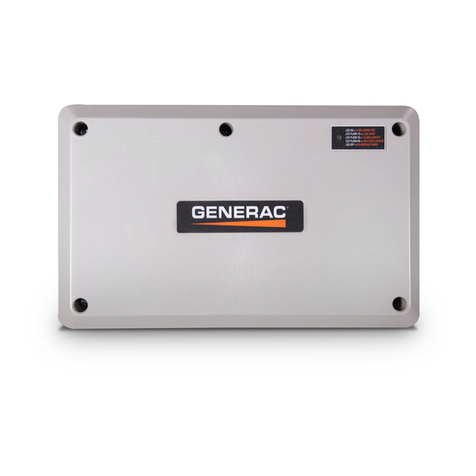
Generac Power Systems
Generac Power Systems SMM Owners & installation manual
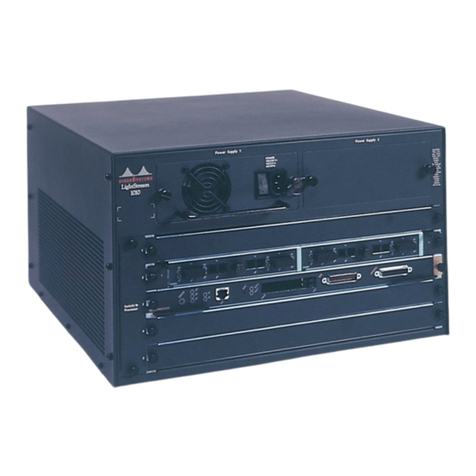
Cisco
Cisco LightStream 1010 Configuration note

GUNPOWER
GUNPOWER GPR-WIFI-001 manual
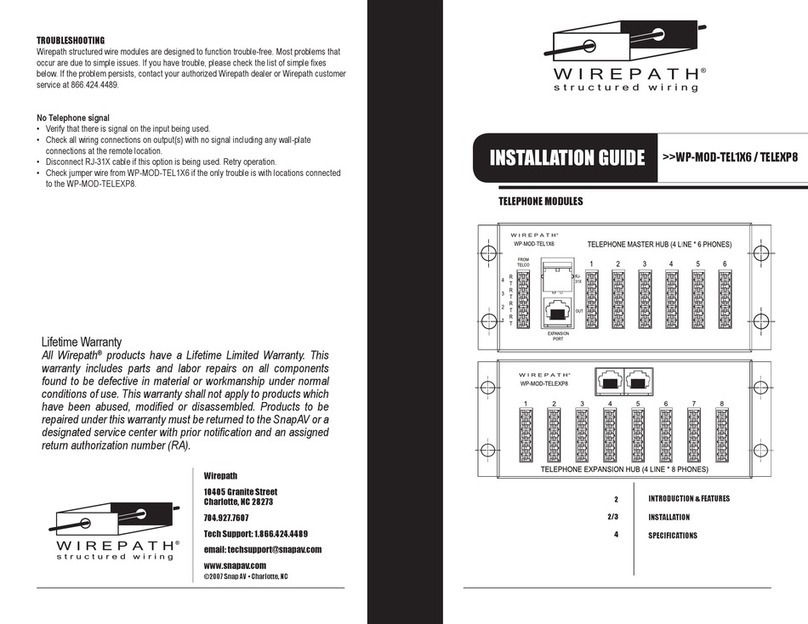
Wirepath
Wirepath WP-MOD-TEL1x6 installation guide
